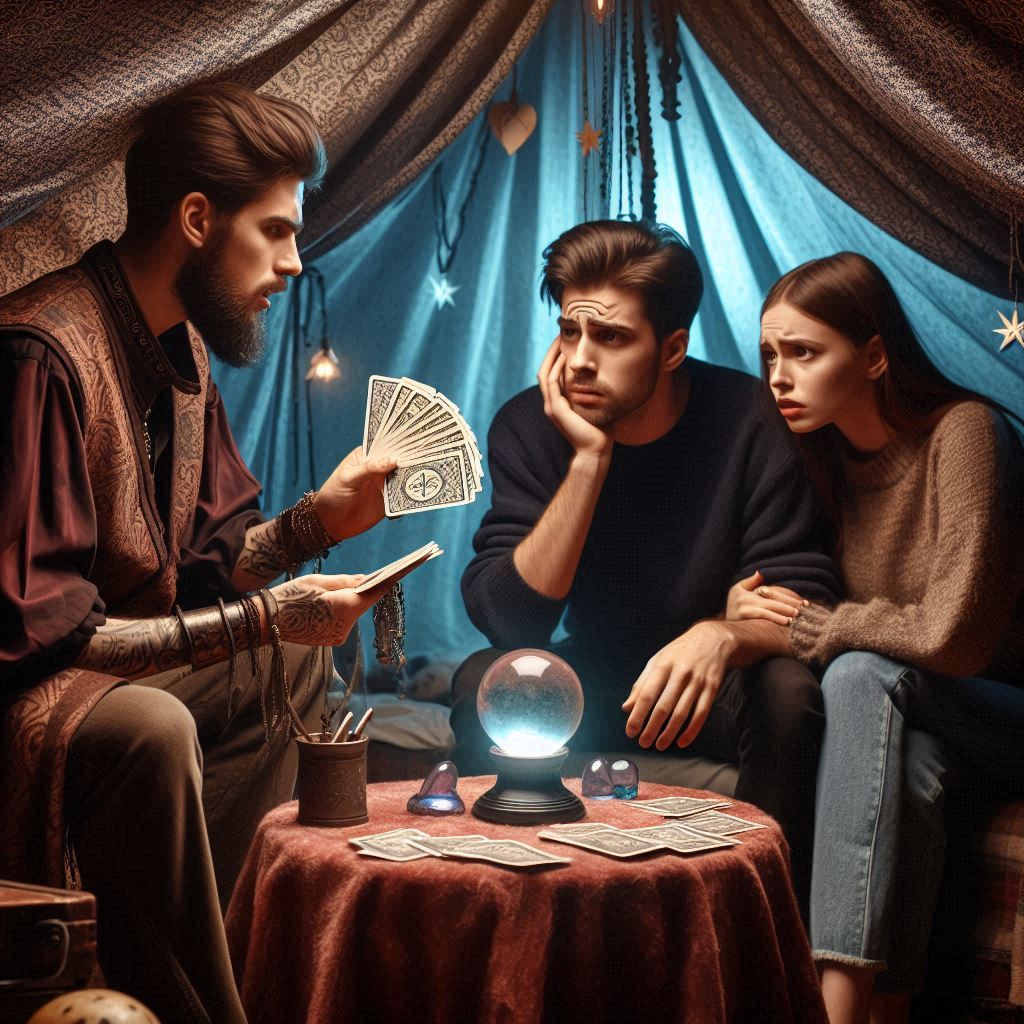Introduction
Have you ever wondered why we call certain TV dramas “soap operas”?
This term has an interesting and rich history.
Understanding its origin gives us insight into the evolution of entertainment and advertising.
Soap operas have become a staple in our cultural lexicon.
These shows captivate millions of viewers with their melodramatic storylines.
However, few people know the origins of the term “soap opera.”
In this blog post, we will explore the fascinating history behind this term.
We will uncover how these dramas got their unique name and why it has stuck around for decades.
Why the Term Matters
Understanding the term “soap opera” is essential for several reasons:
- It reveals the early relationship between entertainment and advertising.
- It shows how media and marketing have evolved.
- It highlights the influence of these shows on popular culture.
The Purpose of This Blog Post
Our goal is simple: to explain the origins and meaning behind “soap opera.” We will:
- Explore the early days of radio dramas.
- Discuss the role of soap manufacturers in sponsoring these shows.
- Examine the transition from radio to television.
- Reflect on the term’s cultural impact and ongoing relevance.
By the end of this post, you will have a clear understanding of why we call these TV dramas “soap operas”.
You will also appreciate the historical significance and lasting legacy of this beloved genre.
So, let’s dive into the intriguing world of soap operas and discover how they became a fixture in our entertainment landscape.
Section 1: The Origins of Soap Operas
1.1 Early Days of Radio Drama
Serialized dramas began on radio in the 1930s. These shows aired daily, creating a continuous narrative that captivated audiences.
They featured dramatic storylines with complex characters and emotional conflicts.
Innovative Tech Solutions, Tailored for You
Our leading tech firm crafts custom software, web & mobile apps, designed with your unique needs in mind. Elevate your business with cutting-edge solutions no one else can offer.
Start NowThe target audience for these radio dramas was primarily homemakers. These women spent their days at home, performing household chores.
Radio dramas provided entertainment and companionship during their daily routines. They offered a brief escape from the monotony of housework.
Radio networks understood their audience well. They tailored content to appeal specifically to homemakers.
The stories often revolved around domestic issues, relationships, and family dramas. This made the shows highly relatable to their listeners.
1.2 Sponsorship by Soap Manufacturers
Soap manufacturers like Procter & Gamble, Colgate-Palmolive, and Lever Brothers played a crucial role in the success of these dramas.
These companies saw an opportunity to market their products to a captive audience.
Here’s why soap manufacturers chose to sponsor these shows:
- Direct Access to Homemakers: The primary audience for radio dramas was homemakers, who were the main buyers of household products.
- Brand Loyalty: By sponsoring popular shows, companies created strong brand loyalty among listeners. Regular exposure to their products led to increased trust and preference.
- Advertising Innovation: Sponsorship of serialized dramas was an innovative advertising strategy. It allowed companies to seamlessly integrate their products into the content, making the ads less intrusive and more effective.
Soap manufacturers invested heavily in these shows.
They produced high-quality dramas that kept listeners engaged. This investment paid off, as sales of their products soared.
Why Soap Manufacturers Sponsored Radio Dramas
- Targeted Marketing: Sponsorship allowed companies to reach their target demographic effectively. Homemakers listened to these shows daily, making them an ideal audience for household products.
- Engagement and Repetition: Daily episodes ensured repeated exposure to the brand. This constant reinforcement helped solidify brand recognition and loyalty.
- Emotional Connection: The dramatic storylines created an emotional connection with the audience. When listeners felt invested in the characters and plots, they were more likely to trust the brands associated with them.
This sponsorship strategy created a symbiotic relationship between soap manufacturers and radio networks.
Manufacturers provided financial support, while networks delivered content that attracted and retained listeners.
The success of these radio dramas led to the coining of the term “soap opera.” This name reflected both the genre’s content and its primary sponsors.
As these dramas transitioned to television, the term “soap opera” remained. It continues to be used to describe serialized dramas with ongoing storylines and emotional themes.
In essence, the origins of soap operas are rooted in the early days of radio.
Serialized dramas captivated homemakers and provided a perfect platform for soap manufacturers to market their products.
This innovative sponsorship model laid the foundation for the soap operas we know today.
Read: What Does p.g.a. Mean in Film Credits?
Section 2: The Term “Soap Opera”
2.1 Meaning of “Soap”
The term “soap opera” directly connects to its early sponsors: soap manufacturers. Companies like Procter & Gamble, Colgate-Palmolive, and Lever Brothers saw an opportunity.
They targeted homemakers, the primary audience of these serialized dramas, by sponsoring these shows.
Advertising played a crucial role in naming these dramas “soap operas.” Soap companies integrated their products into the shows’ content.
They sponsored the programs, and their advertisements aired during the episodes. This strategy led to a strong association between soap products and these serialized dramas.
The connection to soap manufacturers wasn’t just about commercials. It was also about branding and sponsorship.
Soap companies funded the production of these shows. In return, they received prime advertising slots and brand mentions within the storylines.
Here’s how advertising influenced the name “soap opera”:
Seamless API Connectivity for Next-Level Integration
Unlock limitless possibilities by connecting your systems with a custom API built to perform flawlessly. Stand apart with our solutions that others simply can’t offer.
Get Started- Constant Presence: Soap advertisements were ever-present during these shows. Listeners associated the dramas with the products advertised.
- Product Placement: Characters in the dramas often used or mentioned the sponsors’ products. This created a seamless connection between the narrative and the brands.
- Brand Loyalty: The shows aimed at homemakers, who were the main buyers of household products. Regular exposure to the brand built trust and loyalty.
The term “soap” in “soap opera” thus highlights the significant role of soap manufacturers in the creation and popularization of these serialized dramas.
2.2 Meaning of “Opera”
The word “opera” in “soap opera” captures the dramatic and emotional nature of the storylines.
These shows featured complex plots and heightened emotions.
The narratives were designed to keep the audience hooked, episode after episode.
Dramatic elements in soap operas include:
- Emotional Conflicts: Characters often faced intense personal and family dramas. Love triangles, betrayals, and secrets were common themes.
- Ongoing Storylines: Unlike other shows, soap operas had continuous story arcs. Each episode ended with a cliffhanger, encouraging viewers to tune in the next day.
- Character Development: Over time, characters evolved and grew. Viewers developed strong emotional connections with the characters.
Traditional opera also shares these dramatic elements. Operas are known for their high emotion, intricate plots, and powerful performances.
Soap operas, like their musical counterparts, focused on storytelling that tugged at the heartstrings.
Comparing soap operas to traditional operas:
- High Emotion: Both genres revolve around intense emotional experiences. Whether it’s love, loss, betrayal, or joy, the emotions are amplified.
- Complex Plots: Just as operas weave complex stories with twists and turns, soap operas do the same. The narratives are designed to be engaging and unpredictable.
- Character Focus: Both operas and soap operas emphasize character development. Viewers and listeners become invested in the characters’ journeys.
The term “opera” in “soap opera” signifies the melodramatic and serialized nature of these shows. It highlights their ability to draw audiences into a world of heightened reality and emotional storytelling.
In fact, the term “soap opera” combines two key elements: soap and opera. “Soap” reflects the commercial origins and sponsorship by soap manufacturers.
“Opera” captures the dramatic, emotional, and serialized storytelling style. Together, these elements define a genre that has captivated audiences for decades.
The term has endured, reflecting the unique blend of commerce and drama that characterized the early days of serialized radio and television dramas.
Read: What Makes Live Theater and Concerts a Magical Experience?

Section 3: Transition to Television
3.1 Moving from Radio to TV
In the 1950s, soap operas made a significant transition from radio to television. This shift marked a new era in entertainment.
Television offered a visual medium that radio could not provide. Producers adapted the popular radio dramas for TV, maintaining the essence of the stories.
The transition to television retained the serialized format. The shows continued to feature daily episodes with ongoing storylines.
Viewers still followed the lives of their favorite characters through complex, emotional plots. This consistency ensured that the existing audience remained engaged.
Sponsorship by soap manufacturers continued during this transition. Companies like Procter & Gamble, Colgate-Palmolive, and Lever Brothers remained key sponsors.
They saw the potential of television to reach a larger audience. Their advertisements were seamlessly integrated into the TV shows, just as they had been on radio.
Here’s how the format and sponsorship remained similar:
- Daily Episodes: Soap operas maintained their daily broadcasting schedule, keeping the audience hooked with continuous storylines.
- Product Placement: Soap manufacturers continued to sponsor the shows, with their products featured prominently in advertisements.
- Consistent Storytelling: The narrative style and emotional depth remained unchanged, ensuring a smooth transition for loyal listeners.
3.2 Daytime Television and Target Audience
Soap operas quickly became a staple of daytime television. They filled the daytime slots that were perfect for their target audience.
Homemakers, who had listened to the radio dramas, now watched these TV shows during their daily routines.
Daytime TV offered a perfect platform for soap operas. Networks scheduled these shows to air during the day, reaching homemakers who were at home.
The content remained tailored to this audience, focusing on domestic and family dramas. This relatability kept viewers engaged and loyal.
The primary audience influenced the content of soap operas significantly. Showrunners understood their viewers’ preferences and needs.
They crafted storylines that resonated with homemakers, addressing themes of love, betrayal, family, and personal struggles.
Transform Business with Custom CRM & ERP Solutions
Elevate your operations with a CRM or ERP tailored for you. Let’s build the perfect solution that others can't replicate—crafted to match your business's needs like no other.
Get StartedHere’s how soap operas became a staple of daytime TV:
- Perfect Timing: Airing during the day, soap operas reached homemakers who had the time to watch.
- Relatable Content: The shows focused on domestic issues and personal relationships, making them highly relatable.
- Emotional Engagement: The dramatic and emotional storylines kept viewers coming back for more.
Networks also benefited from the loyal viewership of soap operas. The consistent audience allowed them to sell advertising slots to sponsors at premium rates.
This mutually beneficial relationship ensured the longevity of soap operas on daytime TV.
The transition from radio to television in the 1950s marked a significant shift for soap operas. The format and sponsorship remained similar, ensuring continuity for loyal audiences.
Daytime television became the perfect home for these dramas, reaching their target audience effectively. The shows’ relatable content and emotional depth solidified their place as a staple of daytime TV.
Read: Women Pioneers in the Producers Guild of America
Section 4: Cultural Impact and Evolution
4.1 Popularity and Influence
Soap operas have enjoyed immense popularity over the decades.
These shows have captivated audiences with their dramatic and emotional storylines.
Millions of viewers tuned in daily, forming a loyal fan base.
Soap operas significantly influenced popular culture. They introduced memorable characters and iconic scenes that became cultural touchstones.
Catchphrases and plot twists entered everyday conversations, reflecting the shows’ widespread impact.
The influence of soap operas extended beyond television. They inspired other media, including books, movies, and even parodies.
Soap operas set the standard for serialized storytelling, paving the way for future TV dramas.
Soap operas also played a crucial role in addressing social issues. They tackled topics like infidelity, addiction, and mental health, sparking important conversations.
These shows often pushed the boundaries of what was acceptable on TV, challenging societal norms.
Here’s how soap operas influenced popular culture:
- Iconic Characters: Soap operas introduced characters that became household names.
- Memorable Plot Twists: Unforgettable storylines left a lasting impression on viewers.
- Cultural References: Soap operas influenced language and cultural references in everyday life.
4.2 Evolution of the Genre
Soap operas have evolved significantly with changing times and audiences.
Producers adapted the genre to stay relevant and appealing to new generations.
In the 1980s, prime-time soap operas emerged. Shows like “Dallas” and “Dynasty” brought the soap opera format to evening television.
These prime-time dramas attracted a broader audience, expanding the genre’s reach.
Digital streaming platforms have also transformed soap operas.
Streaming services offer on-demand access, allowing viewers to watch episodes at their convenience.
This shift has made soap operas more accessible and adaptable to modern viewing habits.
The evolution of soap operas includes:
- Prime-Time Shift: Soap operas moved to evening slots, attracting a wider audience.
- Streaming Platforms: Digital platforms offer flexibility, catering to contemporary viewers’ preferences.
- Modern Storylines: Producers introduced fresh, relevant themes to resonate with today’s audience.
Soap operas have also embraced diverse storytelling.
They now include a wider range of characters and perspectives, reflecting the changing social landscape.
This inclusivity has helped soap operas remain relevant and engaging.
Tailored Tech Solutions to Drive Your Business Forward
Maximize your business potential with custom tech strategies. We deliver bespoke solutions that others can’t match, designed to solve your specific challenges with precision and impact.
Contact UsTechnological advancements have further influenced the genre. High-definition visuals and advanced special effects have enhanced the production quality.
These improvements have elevated the viewing experience, making soap operas more visually appealing.
Soap operas have left a profound cultural impact and continue to evolve. Their popularity and influence on popular culture are undeniable.
The genre has adapted to changing times, shifting to prime-time slots and digital platforms.
By embracing modern storytelling and technological advancements, soap operas have maintained their relevance and captivated new generations of viewers.
Read: How to Choose the Right Acting Classes

Section 5: Modern Perception of Soap Operas
5.1 Current Status in Media
Soap operas continue to hold a unique place in the television landscape today.
While their format has evolved, they remain a beloved genre.
Several long-running soap operas still captivate audiences worldwide.
Shows like “The Bold and the Beautiful” and “General Hospital” are prime examples.
These series maintain a loyal fan base, with millions tuning in daily. Their enduring popularity underscores the genre’s lasting appeal.
Soap operas have adapted to modern viewing habits.
Many are now available on streaming platforms, making them more accessible.
This shift has broadened their audience, attracting younger viewers who prefer on-demand content.
Here’s a look at the current state of soap operas:
- Continued Popularity: Shows like “Days of Our Lives” and “The Young and the Restless” remain staples on daytime TV.
- Streaming Integration: Modern soap operas are accessible on digital platforms, expanding their reach.
- Global Appeal: Many countries have their own versions of soap operas, showcasing the genre’s universal appeal.
The genre has also embraced diversity and modern themes. Soap operas now feature a broader range of characters and storylines.
These changes have helped them stay relevant in a rapidly evolving media landscape.
5.2 The Legacy of Soap Operas
Soap operas have left an indelible mark on television and popular culture.
Their legacy is evident in many aspects of modern media. The term “soap opera” has transcended its origins to describe any melodramatic narrative.
The genre’s influence is seen in films, TV series, and even literature.
Melodramatic storylines and cliffhangers, hallmarks of soap operas, are now common in many genres.
The term “soap opera” is often used to denote overly dramatic or sentimental content.
Reflecting on the lasting legacy of soap operas, consider the following:
- Cultural Impact: Soap operas introduced story arcs and character development that influenced future TV shows.
- Narrative Innovation: They pioneered the use of cliffhangers and serialized storytelling, shaping modern TV drama.
- Common Terminology: “Soap opera” has become a term for melodramatic stories across various media.
The genre has also contributed to significant social conversations. Topics like mental health, LGBTQ+ issues, and racial diversity are now part of soap opera storylines.
These shows have been at the forefront of depicting real-world issues, making them both entertaining and impactful.
Soap operas continue to thrive, adapting to contemporary trends and technologies. Their legacy endures in the form of timeless storytelling techniques and cultural references.
The term “soap opera” has become synonymous with melodrama, reflecting the genre’s enduring influence on media and society.
As they evolve, soap operas remain a testament to the power of storytelling in captivating audiences across generations.
Conclusion
Soap operas, named for their soap manufacturer sponsors, have a fascinating history rooted in radio dramas of the 1930s.
These serialized dramas transitioned to television in the 1950s, maintaining their format and emotional storylines.
The term “soap opera” combines the commercial influence of soap sponsors and the dramatic nature of operatic storytelling.
Key points discussed include:
- Origins: Soap operas began as radio dramas sponsored by soap manufacturers targeting homemakers.
- Transition to TV: The move to television in the 1950s retained the serialized format and sponsorship model.
- Cultural Impact: Soap operas influenced popular culture and introduced serialized storytelling techniques now common in various media.
- Modern Evolution: The genre has adapted to digital platforms and continues to tackle contemporary social issues.
Soap operas have left a lasting legacy in the television landscape. Their influence extends beyond TV, impacting other forms of media.
The term “soap opera” now describes melodramatic narratives across various genres.
These shows pioneered serialized storytelling, character development, and cliffhangers, which are now standard in TV dramas.
Before you go…
Hey, thank you for reading this blog to the end. I hope it was helpful. Let me tell you a little bit about Nicholas Idoko Technologies.
We help businesses and companies build an online presence by developing web, mobile, desktop, and blockchain applications.
We also help aspiring software developers and programmers learn the skills they need to have a successful career.
Take your first step to becoming a programming boss by joining our Learn To Code academy today!
Be sure to contact us if you need more information or have any questions! We are readily available.











